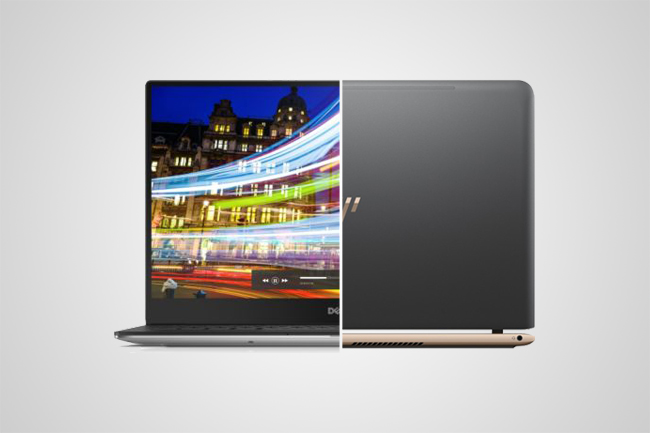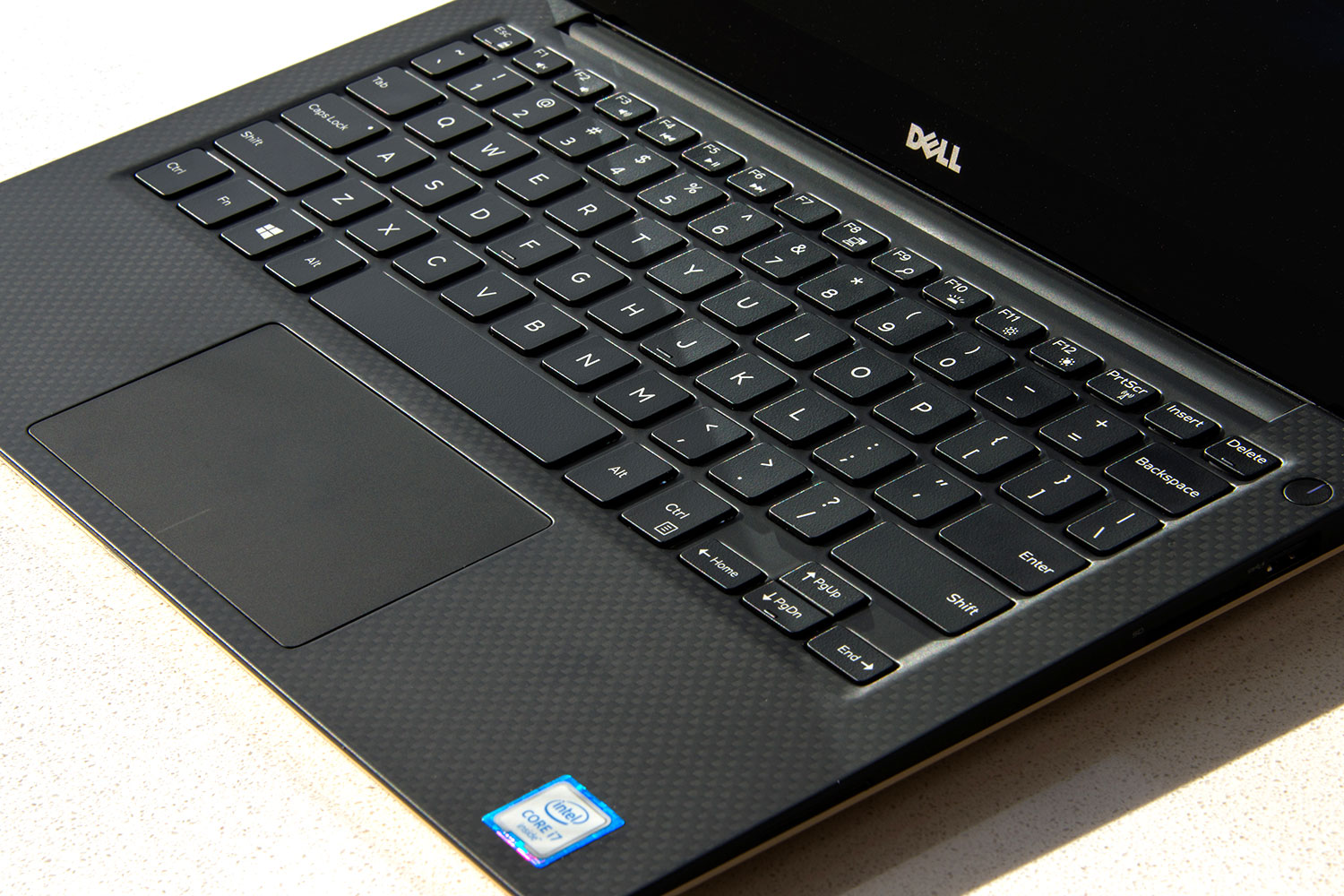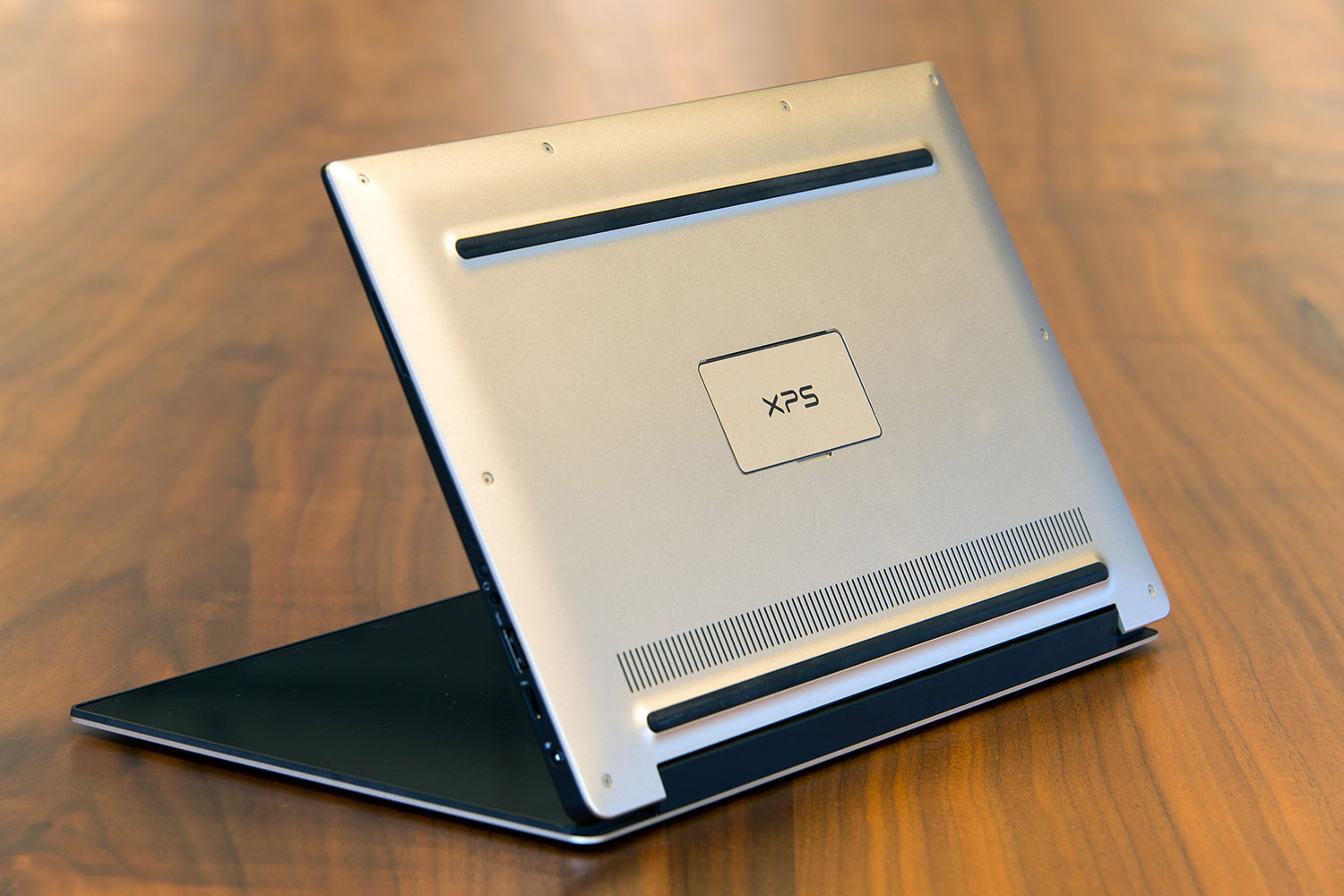
The Spectre matches the XPS 13’s size, and many of its other features are comparable as well. Let’s break down the hardware differences.
| HP Spectre (2016)
|
Dell XPS 13 (Late 2015) |
|
| Dimensions | 12.8 x 9.03 x 0.41 (in) | 11.98 x 7.88 x 0.33-0.60 (in) |
| Weight | 2.45 pounds | 2.70 pounds |
| Keyboard | Full size, backlit keyboard | Full size, backlit keyboard |
| Processor | Intel Core i5-6200U (3M Cache, up to 2.80 GHz) | Intel Core i3-6100U Processor (3M Cache, up to 2.30 GHz) |
| RAM | 8GB of 1866MHz LPDDR3 | 4GB of 1866MHz LPDDR3 |
| Graphics | Intel HD Graphics 520 | Intel HD Graphics 520 |
| Display | 13.3-inch LED-backlit display with IPS technology | 13.3-inch LED-backlit IPS screen |
| Resolution | 1,920 x 1,080 | 1,920 x 1,080 |
| Storage | 256GB SSD | 128GB SSD |
| Networking | 802.11ac, Bluetooth 4.2 | 802.11ac, Bluetooth 4.1 |
| Ports | USB 3.0, USB Type-C/Thunderbolt (2), headset jack | USB 3.0, USB Type-C/Thunderbolt, SDXC card reader, headset jack |
| Webcam | 720p camera | 720p widescreen HD webcam |
| Operating System | Windows 10 | Windows 10 |
| Battery | 38-watt-hour | 56-watt-hour |
| Price | $1169+ | $799+ |
| Availability | Coming soon | Now |
| Review | Coming soon | 4.5 out of 5 |
Specifications
The XPS 13 and the Spectre are both high-end, powerful ultraportables. They share a surprising number of components, or at least comparable ones, at different configurations. The XPS 13 starts with an Intel Core i3-6100U processor on the cheapest model, but more expensive models offer the same i5-6200 and i5-6500 series chips as the Spectre, most of which use Intel’s HD Graphics 520 for serviceable if not powerful integrated graphics. More expensive Dells get the Iris 540, which is significantly quicker, and can actually handle some 3D games. The Spectre comes with 8GB of RAM in both its configurations, while the XPS 13 offers between 4GB and 16GB on memory.
Both machines come with a solid state drive for fast storage, but the Spectre starts at 256GB while the XPS 13 goes as low as 128GB in its cheaper configuration. The Spectre makes out at 512GB, which may not be enough for users with large amounts of games or media, while the XPS 13 hits 1TB in its top-tier configuration. Windows 10 is loaded onto both.
The screens on the XPS 13 and Spectre are identical in size and resolution… at least at the start. The base panels are 1,920 x 1,080 — but more expensive models of the XPS use a 3,200 x 1,800 screen, which the Spectre doesn’t have. Dell gains another advantage with that screen upgrade: it’s touch-capable. The lack of a touchscreen on the Spectre is a curious omission for such a premium product.
The Spectre loses out on battery too, with a 38-watt-hour power bank versus the XPS 13’s generous 56-watt-hours. Even equipped with more power-hungry components like a high-resolution touchscreen, it’s reasonable to expect the Dell laptop to outlast the HP in most situations.
Thanks to a wider variety of processors and memory, more screen options, and a bigger battery, the XPS 13 wins the hardware battle by a considerable margin.
Winner: XPS 13
Design
Both the XPS 13 and the Spectre are marketed as high-end, design-focused laptops. There’s no accounting for taste, but both use premium materials like machined aluminum and carbon fiber throughout, making them objectively more durable than plastic laptops. The Spectre claims the title of the “world’s thinnest laptop” with a thickness of just .41 inches, noticeably thinner than the XPS 13 at .60 inches. It’s also lighter than the Dell at just 2.45 pounds. But the super-thin bezels on the XPS 13 also let it shrink its width and depth: in both dimensions, the Spectre is about an inch larger. Since both are extremely small and light, we’ll call this one a draw.
Both laptops use high-end IPS displays, backlit full-sized keyboards, and large touchpads to make the user experience as good as possible. Both of them even cover the trackpad in glass, making this particular category a tough call as well. We’ll give this one to the Spectre, if only for its Bang & Olfson speakers that sit on the keyboard deck instead of below it. That should make audio louder and clearer than on the XPS 13.
We can pick a clear winner when it comes to ports. HP went forward-looking with the Spectre, offering two USB 3.1 Gen 2 and one USB 3.1 Gen 1 port, all of which use the fairly new Type-C cable. (For more information on the difference between Gen 1 and Gen 2, check out this article.) The XPS 13 only offers one Type-C port with 3.1 Gen 2, but it also has two standard USB 3.0 ports that are compatible with a nearly unlimited selection of current accessories. It also has a built-in SD card slot, something the Spectre is apparently too thin to include, and a dedicated AC power jack (so you don’t use up that USB Type-C port). Both machines need adapters for HDMI or Thunderbolt external video, but for ease of use the XPS 13 is the better choice.
The XPS 13 offers a tighter package with better port support, but the Spectre is undeniably attractive and amazingly thin, with better integrated speakers and more USB Type-C ports. This one’s too close to call.
Winner: Tie
Availability & price
The XPS 13 starts at just $800 for a low-end but still quite serviceable model, with a Core i3 processor, 4GB of RAM, a 128GB SSD drive, and a 1,920 x 1,080 non-touch screen. The Spectre isn’t nearly so cheap: its introductory model is $1170. But with a Core i5 processor, 8GB of
There’s only one souped-up model of the Spectre. The $1,250 version bumps up the processor to a Core i7-6500U, but leaves the rest of the hardware intact. Dell’s cheapest configuration with a Core i7 is a whopping $1,650, so speed demons on a budget will want to head for the HP model.
That said, Dell’s configuration options at both lower and higher prices are more numerous and more impressive. That $1,750 Core i7 model also includes the 3200 x 1800 touchscreen and an Iris 540 GPU, both of which aren’t offered at all on the Spectre.
For sheer flexibility and a much lower starting price, Dell gets the nod here. Note that the Spectre is a brand new design, and may be updated with more hardware options in the future.
Winner: XPS 13
Conclusion
Long live the king. Though the HP Spectre is interesting and turns heads easily, the more technically proficient Dell XPS 13 is still the better choice. In addition to more pricing options and an available high-resolution touchscreen, the larger battery and a wider variety of input and output ports make the XPS a better machine to take on the road.
Editors' Recommendations
- Dell XPS vs. Dell Latitude: here’s how to decide
- Dell XPS 14 or XPS 16? Here’s how to know which to buy
- Best Dell XPS deals: Save on Dell XPS 13, Dell XPS 15 and Dell XPS 17
- Dell vs. HP: Which laptop brand is best for your needs?
- Dell just hit reset on the XPS













